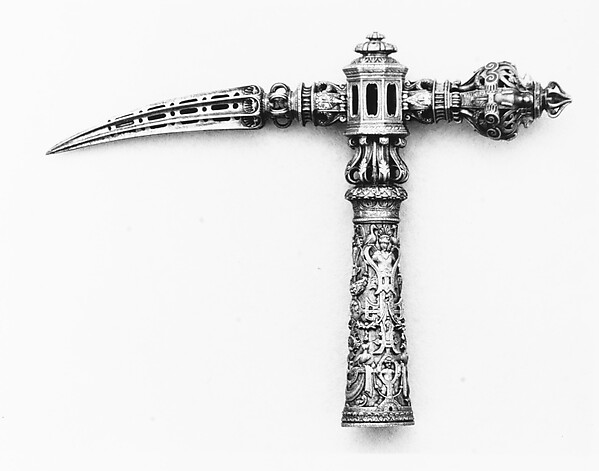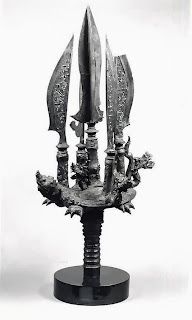For project
number 5, as a curator, my exhibition will feature weaponry from different time
periods and different countries across the globe. The theme of my exhibition
exclusively displays hand held weapons including swords, daggers, partisans and
hammers. All of the weapons shown were made of different kinds of metal
material such as iron, steel, gold, and copper. As a curator, my primary focus
would be to grab the attention of individuals who appreciate historical weapons
and the detail and craftsmanship that went into making them. My theme was also
inspired by the fact that I enjoy listening to death metal music. My goal with
this exhibition will also be to target the attention of other people who also enjoy
metal music as a genre, and who have an interest in detailed weapons that are
themed similarly to the death metal music genre. Some of them appear very
heavy, and downright brutal. The weapons in a sense reflect the theme of the
death metal genre. Many of the weapons displayed could possibly be used as a
prop for a death metal concert, or if the band would enter into battle, these
would be the weapons they would choose to take with them in my opinion. I think
this exhibition will be a great opportunity to bring in new visitors to the museum.
I believe it will grab the interest of others who enjoy metal music as well as
people who would be interested or curious about historical weapons and fine
craftsmanship.

"Head of War Hammer", completed in the year1575, Italy (Not on Display)
"Hunting Knife Combined with Wheelock Pistol" Completed in the year 1546, Germany, (Not on Display)
"Dagger and Sheath" Completed in the year 1627, India, Gallery 463
"Hunting Sword of Prince Camillo Borghese" Completed in the year1813, Paris France, Gallery 375.
"Blade and Mounting for a short sword (Wakizashi)" Completed in the year 1839, Japan, (Not on Display)
"Partisan" Completed in the year 1600, Austria, (Not on Display)
"Partisan of the Bodyguard of Vittorio Amadeo II (1666–1732), Duke of Savoy". Completed in the year 1700, Italian, Gallery 371
"Halberd Head with Nagas and Blades on Tortoise" Completed in the second half of the 13th century, Indonesia, Gallery 247
"Halberd of the Swiss Guard of Johann Georg II (reigned 1656-80)" Completed in the year 1680, German, Gallery 371
"State Partisan" Completed in the year 1732, German, (Not on Display)








